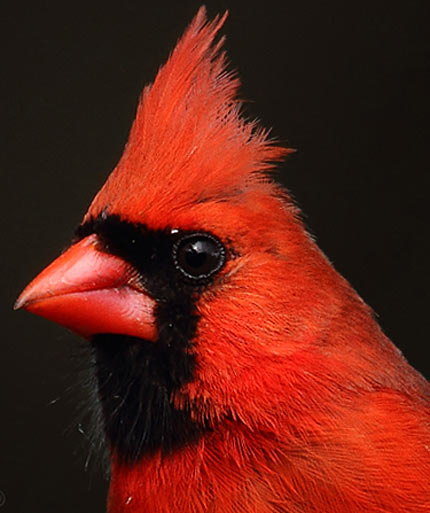Northern Cardinal – Bright Red Fierce Defender

Known also as the Northern Cardinal or Redbird, the Common Cardinal can be found in the woodlands, gardens, shrub-lands, and swamps of the southern parts of Canada, all over the eastern United States (from Maine to Texas), Mexico, Bermuda, Guatemala, Belize, California (U.S.) and on two Hawaiian Islands. The cardinal is about 8 inches (21 cm) in length, weighs about 1.6 ounces (45 grams), and is extremely territorial. Males will mark out their territory using song, but will not hesitate to tenaciously fight off any intruders. In fact, male cardinals have been observed fighting their own reflections for hours. One of the reasons for this harsh stance on intruders, is the number of predators that the cardinal faces; including cooper’s hawks, loggerhead shrikes, northern shrikes, eastern gray squirrels, long-eared owls, eastern screech owls, milk snakes, coluber constrictors, blue jays, fox squirrels, and eastern chipmunks. Cardinals are so weary of predators, that during the phase of a fledgling’s (a baby cardinal) life when they defecate after every meal, its mother will constantly transport its feces elsewhere, so as not to let the scent reveal their nest’s location.


The cardinal itself feeds on a wide variety of things; although 90 percent of its diet consists of weeds, grains, and fruits; it also ground feeds (feeds while hoping around the ground) on things like beetles, cicadas, grasshoppers, snails, corn, sunflower seeds, elm tree bark, and maple syrup (it drinks it from the holes left in trees by sapsuckers). Cardinals are most easily recognized by the brilliants coloring and majestic appearance of the males of the species; who are a bright crimson red, with black faces, and fairly large crests atop their heads. Once kept all over the US as pets, the sale of cardinals as cage-birds was banned by the Migratory Bird Treaty Act of 1918.

